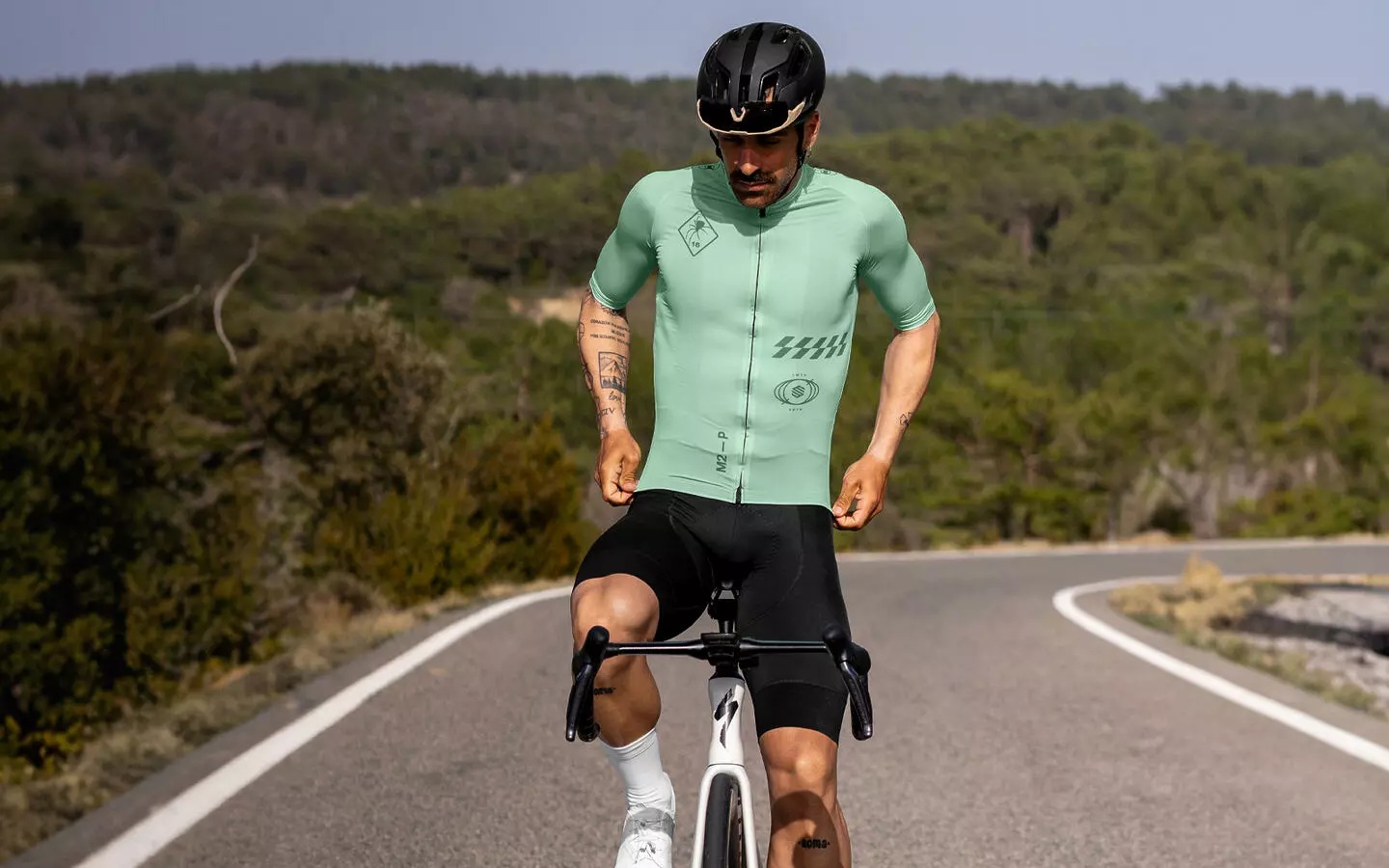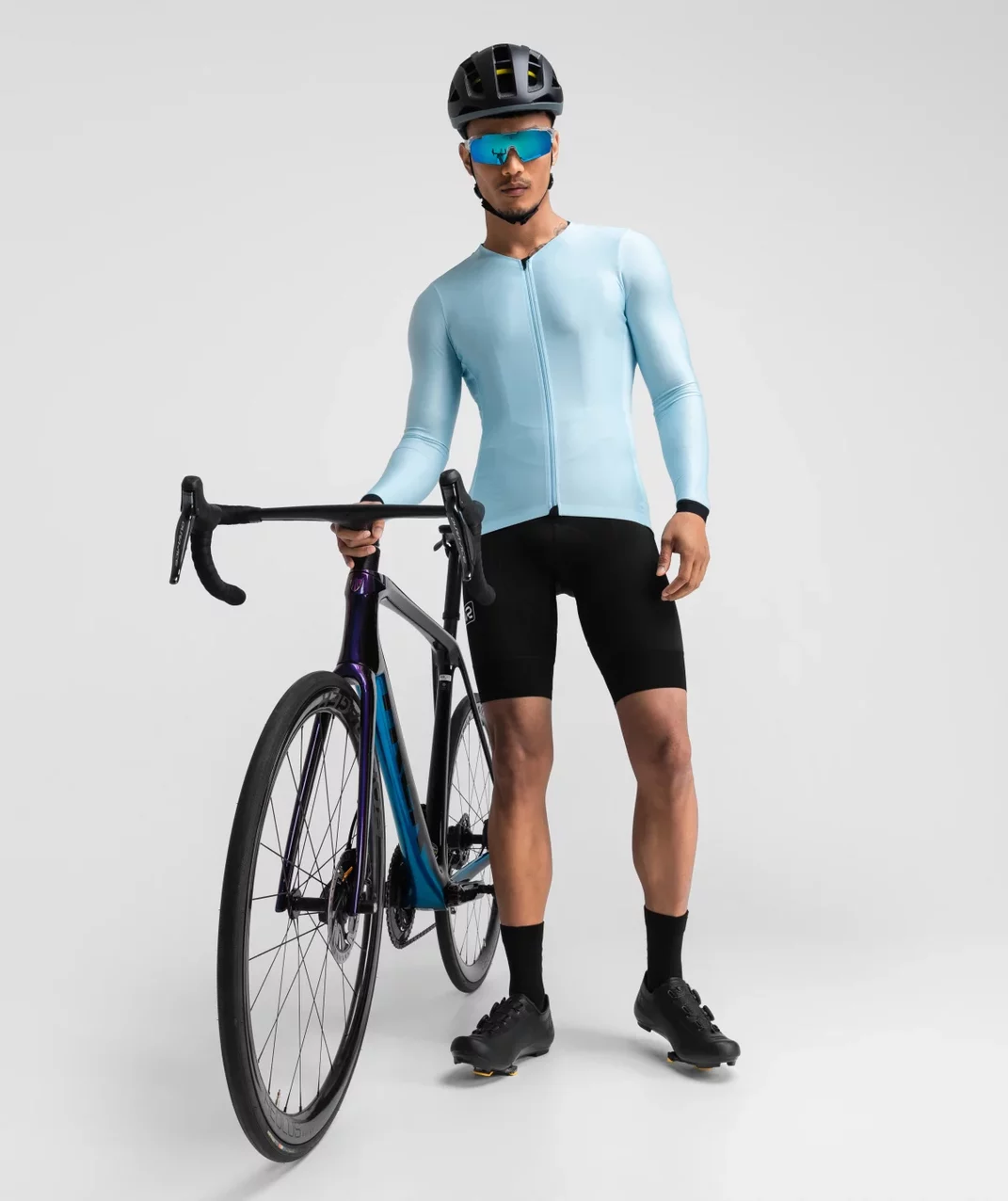While browsing through the Siroko online store, you may have wondered: what is UPF in our product descriptions and what does UPF 50+ actually mean for you?
The UPF, or Ultraviolet Protection Factor, is a measure that indicates how much ultraviolet (UV) radiation is blocked by a fabric. It is similar to the SPF (Sun Protection Factor) rating that you can find on sunscreens, but the garment maintains its protection well beyond the recommended 2 hours to reapply the sunscreen. The UPF rating level indicates the effectiveness of a garment in protecting the skin from the damaging effects of the UV radiation (both UVA and UVB).
The UPF is a number determined by laboratory testing of the amount of UV radiation passing through the fabric. For example, UPF 50 means that only 1/50 of the UV radiation can penetrate the fabric, letting only 2% of the UV rays pass through.

Depending on the fabric, we can come across the following UPF classification:
- UPF 15-24: Good level of protection. Blocks 93.3% to 95.9% of UV rays.
- UPF 25-39: Very good level of protection. Blocks 96.0% to 97.4% of UV rays.
- UPF 40-50+: Excellent level of protection. Blocks 97.5% to over 98% of UV rays.
Factors that affect the UPF rating in clothing
- Type of fabric: Denser, tightly woven fabrics tend to have a higher UPF. For example, polyester and nylon generally block more UV rays. The UPF rating in linen and cotton garments, on the other hand, depends on how these are woven and treated or processed. Synthetic fabrics tend to maintain their UPF level better than natural fibers, which can lose their effectiveness more quickly, especially if they are not specifically treated.
- Color: Dark and bright colors absorb more UV radiation than light colors, which means the UV rays are less likely to reach our skin. Therefore, they get higher UPF ratings than light colored garments which reflect more UV radiation but also let more UV radiation through. The more vivid the color, the greater the protection: for instance, a bright orange jersey is more protective than a pastel pink one.
- Thickness and weight: Thicker and heavier materials offer better protection. But of course, covering yourself with a thick wool blanket in the middle of summer might not be the smartest of choices.
- Fit: Loose-fitting garments tend to offer better protection than tight-fitting garments, especially if the tight-fitting garment overstretches the fabric and makes it thinner.
- Fabric treatment: Some fabrics are treated with chemical substances that improve their ability to block UV rays and make the UPF protection last longer.
- New vs used: New garments generally offer greater protection. Use, washing and wear can reduce the fabric’s ability to block the UV radiation. Machine washing can be more harmful to treated fabrics, especially if hot water or strong detergents are used. Each wash may gradually reduce the effectiveness of the UV treatment. For this reason, it is important to follow the manufacturer’s recommendations for washing garments, especially when it comes to technical fabrics designed specifically for sports.
- Dry vs wet: Some fabrics lose some of their protective properties when wet, although many materials are designed to maintain their protection level even in these conditions.
- Conditions of use: Prolonged exposure to the sun may cause damage to some materials and UV treatments. Friction and stretching can affect the structure of the fabric, reducing its ability to block UV rays.
- Garment care: Following the manufacturer’s care instructions can extend the life of the UPF. Storing clothing in a cool, dry place can help maintain the structural integrity of the fabric and the treatment.
UPF ratings in garments can vary a lot but in general, high-quality apparel specially designed for outdoor sports, like all Siroko clothing, offers a very good or excellent level of UV protection. If properly cared for, it maintains its effectiveness for a long time. But everything has its limits and it’s key to regularly check the condition of the garments. If the fabric is visibly worn, stretched or thin, the UPF level has likely dropped, especially if the garment has been used and washed very frequently. In these cases, getting new clothing with UPF is important to ensure optimal protection.
Why choose apparel with UPF sun protection?
Clothing with a high UPF rating is essential to protect the skin, especially in outdoor activities such as cycling. It is particularly useful for people with sun-sensitive skin, medical conditions related to sun exposure or for those living in areas with high UV radiation as it is a method of constant, consistent protection.
As mentioned above, unlike sunscreens, UPF clothing does not need to be reapplied. It also covers large areas of the body and offers protection that is comparatively much cheaper than sunscreen. Finally, it is a very convenient and much more practical method of protection, especially for prolonged outdoor activities, than applying sun cream every 2 hours.
However, it is not always possible or advisable to rely on a single method of sun protection. The combination of clothing and sunscreen is ideal in sports such as cycling where most of our skin is actually covered by clothing. All the rest of our body that is not covered by bib shorts or jerseys should be protected with sun cream. You can also choose garments such as a long-sleeved summer jersey or summer arm sleeves like Climatik for some extra protection.





